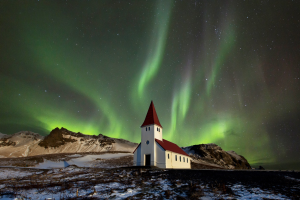Prelims – 21st Nov 23
Auroras
- An aurora is a natural phenomenon that is characterised by a display of a natural-coloured (green, red, yellow, or white) light in the sky.
What causes it?
- It is a light show which is caused when electrically-charged particles from the sun interact with the Earth’s magnetosphere and atmosphere.
- Solar particles interact with different types of gas molecules in the atmosphere, mostly nitrogen and oxygen, resulting in unique, coloured displays of light.
- Oxygen gives off green and red light, while nitrogen glows blue and reddish-purple.
- It is sometimes referred to as ‘polar light’. It is predominantly seen in regions of high altitudes like the Arctic and Antarctic.
- In the Northern Hemisphere, the phenomenon is called the northern lights (aurora borealis), while in the Southern Hemisphere; it’s called the southern lights (aurora australis).
- Auroras can appear in various forms, like streamers, patches, arcs, scattered light, diffused light, etc.

Do other planets have Auroras?
- Earth isn’t the only planet that experiences auroras.
- Any planet with an atmosphere and a magnetic field is likely to have auroras.
- Auroras have been observed on Saturn and Jupiter.
